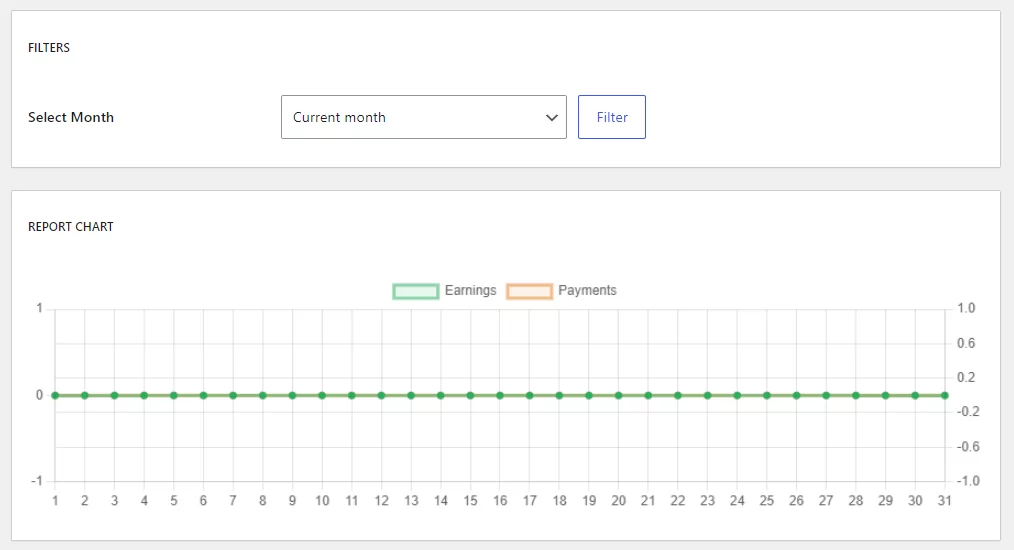
Table of Contents
- 1 Why Subscription-Based Companies Need to Track KPIs and Metrics
- 2 7 Important Membership Site KPIs for Subscription Businesses
- 3 Conclusion
If you use a recurring revenue model for your business, you’ll need to track your subscription KPIs. These key performance indicators can help you identify weak areas in your operations and make the necessary adjustments. However, you might be wondering which subscription business metrics you should focus on.
To help you get started, we’ve put together a list of the main KPIs for your subscription business. By understanding what each metric means and how to calculate it, you should be able to monitor the performance of your business and make confident predictions about its future.
In this post, we’ll discuss why you need to keep an eye on your membership statistics and subscription KPIs. Then, we’ll look at the key subscription business metrics you should track. Let’s dive right in!
Why Subscription-Based Companies Need to Track KPIs and Metrics
Membership metrics can offer valuable insights into the overall performance of your business. You can then use this information to optimize your strategy and gain new customers.
Some membership tools like Paid Member Subscriptions offer easily accessible reports on your performance:
For example, you can see the number of new subscribers and the revenue made within a particular date range.
Paid Member Subscriptions Pro
Accept (recurring) payments, create subscription plans and restrict content on your website. Easily setup a WordPress membership site using Paid Member Subscriptions.
Get Paid Member SubscriptionsLet’s look at a few benefits of tracking your subscription business model metrics:
- They enable you to identify weak and strong areas in your business. You can compare your subscription KPIs against industry benchmarks to see how your company fares in certain areas. For example, if your Customer Acquisition Cost (CAC) is above the industry average, you may need to re-evaluate your marketing costs and efforts.
- You can predict your company’s growth or decline. By monitoring your subscription KPIs on a regular basis, you should be able to identify trends and patterns in customer behavior. This information can tell you what to expect in the coming months. For example, if you note a steady increase in churn, you may need to implement immediate measures to avoid a bleak future for your business.
- You can use them to set targets and understand demand. Membership KPIs can help you set targets and goals for your business. The results can help you forecast the demand for your products. For example, if subscriptions to beginner courses grow by 20 percent in six months while your advanced courses lag behind, you might decide to focus on producing more content for beginners.
As you can see, tracking your subscription KPIs helps you identify what you’re doing right and where you need to improve. Plus, you can use this data to develop products that meet your customers’ needs.
7 Important Membership Site KPIs for Subscription Businesses
Now, let’s look at the main KPIs for your subscription business. We’ll explain what each membership metric means, why it’s important, and how to measure it.
1. Monthly Recurring Revenue (MRR)
MRR is possibly the most important metric for subscription businesses. It measures the income you can expect on a monthly basis, and therefore enables you to plan and budget your business operations accordingly.
It can also help you forecast your earnings over the next few months.
How to Measure Your MRR
To calculate your MRR, you’ll need to take the number of customers you have and multiply it by the monthly rate that they pay. If you charge annual subscription fees (rather than monthly fees), you’ll need to divide the rate by 12 to measure your monthly revenue.
Formula: MRR = no. of customers x monthly rate
2. Annual Recurring Revenue (ARR)
This metric is similar to MRR, but instead, it looks at your annual revenue from subscriptions and memberships. This gives you a wider view of your earnings and growth, which can be quite useful in setting long-term goals.
Plus, it enables you to measure your growth over the months and make predictions for the following year.
How to Measure Your ARR
To measure your ARR, you’ll need to multiply your monthly subscription rate by 12, and then multiply the result by the number of customers.
Formula: ARR = (monthly rate x 12) / no. of customers
3. Customer Lifetime Value (CLV)
Customer Lifetime Value (CLV) is another important KPI for your subscription business. It helps you determine how much revenue a customer will bring into your business throughout the course of their subscription or membership.
Ideally, the CLV should be higher than the costs of gaining a new customer and delivering your services. If not, you might be operating at a loss.
Therefore, the CLV can help you determine if you’re making substantial profits from each customer. For example, you may need to raise your subscription fees if this metric exceeds the customer acquisition cost (which we’ll be looking at in a minute).
How to Measure Your CLV
To calculate your CLV, you’ll first need to work out the average purchase value (total value of purchases divided by the number of purchases) and the average purchase frequency (number of purchases divided by the number of customers).
Then, you’ll need to multiply the average purchase value by the average purchase frequency. This will give you the customer value.
The next step is to work out the average length of each customer relationship (or the retention period). For example, on average, customers subscribe to your services for 36 months.
Finally, you’ll need to multiply the customer value by the retention period.
Formula: CLV = customer value x retention period
4. Average Revenue Per User (ARPU)
This metric is particularly important if you offer multiple subscription plans at different prices. It enables you to determine how much money you’re getting from each customer.
You can use this data to evaluate your current pricing strategy and identify any opportunities for increasing fees. For example, you might raise the subscription fees across all plans if you think that the current ARPU does not reflect the recent increase in expenses.
How to Measure Your ARPU
Measuring your ARPU is quite simple. All you need to do is divide your MRR value by the total number of customers.
Formula: ARPU = MRR / no. of customers
5. Customer Acquisition Cost (CAC)
Your customer acquisition cost gives you an indication of how much money you spend on gaining a new customer. It takes into account your marketing efforts, advertising, and onboarding costs.
This metric can help you find out if you’re running a profitable business. For example, if acquiring a new customer is costing you more than what you’ll make from that customer (as determined by the CLV), you’ll likely struggle to make a profit.
How to Measure Your CAC
To obtain your CAC, you’ll first need to add up the costs of acquiring new clients. This may include social media ads, marketing campaigns, and onboarding costs (like software license for the user).
Then, you’ll need to divide the amount by the number of customers acquired.
Formula: CAC = Total cost of sales and marketing divided by the number of new customers acquired
6. Churn Rate
Your churn rate is the number of customers that you lose over a specific period. You can also use it to calculate the revenue you’ve lost over a period of time.
While unpleasant, your churn rate can help you determine whether customers are happy with your services. Of course, losing clients is inevitable and it’s not always your fault. For example, some of them might find themselves in financial trouble and are unable to keep using your service or product.
However, if you have a high churn rate, it might be an indication that something is wrong with your subscription plans. Perhaps they do not offer enough value to customers, or the renewal fees are too high.
How to Measure Your Churn Rate
To calculate your churn rate, you’ll need to take the number of subscription cancellations you’ve had over a certain period of time and divide it by the total number of customers you had in that same period.
Formulas: Churn rate = subscription cancellations/total customers
7. Retention Rate
Finally, let’s look at a more positive KPI for your subscription business. The retention rate measures the number of customers that renew their memberships after they expire. Basically, it’s the opposite of the churn rate.
Your retention rate gives you an idea of your customer experience. A good rate indicates that the majority of customers are happy with your services and they want to renew their subscriptions. Meanwhile, a bad retention rate suggests that many customers are not interested in extending their memberships.
How to Measure Your Retention Rate
First, you’ll need to specify a period of time (e.g. the last 12 months). Then, you’ll want to get the number of existing customers at the end of the year (and subtract the number of new customers).
Finally, you’ll need to divide the result by the number of customers you had at the start of that period.
Formula: Customer retention rate = (customers at the end of the period – new customers) divided by the number of customers at the start of the period
Conclusion
If you run a subscription-based service, you’ll need to monitor the performance of your plans and memberships. This will help you determine the profitability of your offerings, and identify areas for improvement.
In this post, we looked at the most important KPIs for your subscription business. For example, the customer acquisition cost and average revenue per user can help you find out if the money you make per customer exceeds the expenses of acquiring that customer. Meanwhile, your churn and retention rates can provide insights into the customer experience, and whether customers are satisfied with your service.
If you’re just starting out with membership marketing and are looking for a robust solution to start a membership site, Paid Member Subscriptions is all you need. The plugin makes it easy for you to create subscription plans and monetize them by restricting the content on your site based on the plans your customers purchase.
Paid Member Subscriptions Pro
The best plugin to create a membership site for your subscription business.
Get Paid Member SubscriptionsDo you have any questions about measuring KPIs for your subscription business? Let us know in the comments section below!
Related Articles

Membership Blog: Why Start One, Popular Examples and How To
I think you will agree starting a membership blog seems daunting, especially for a first-timer. Talk to just about any beginner who has never created a membership blog (or even a simple website), and they will field questions such as: Why should I start a membership blog? What kind of content, products, or services should […]
Continue Reading
Membership Page Design Tips & Best Practices
If you're new to subscription businesses, membership page design seems trickier than tackling a fire-breathing dragon. And you are not alone. The idea of creating effective membership page designs is far-fetched for many beginners. Because... Where do you even start? Starting or running a successful membership website is already tough as it is, let alone […]
Continue Reading
Successful Membership Website Examples + How To Create Your Own
Are you looking to start your own membership website? If the answer is yes, we've prepared a list of successful membership website examples for you to follow or take inspiration from. But before we get into the real-life examples, let's first talk about what they are. What is a Membership Website? A membership website is […]
Continue Reading


